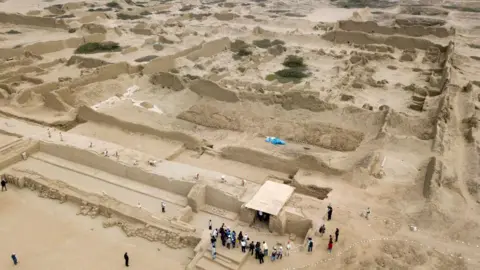Chan Chan Peru: Exploring the Legacy and Challenges of an Ancient Wonder

Chan Chan Peru stands as one of South America's most extraordinary archaeological treasures. Located near Trujillo, this ancient city once served as the vibrant capital of the Chimú Kingdom and showcases the ingenuity and artistry of pre-Columbian civilizations. Today, its sprawling adobe ruins draw thousands of visitors each month, but increasing threats jeopardize its timeless legacy.
The Glory of Chan Chan Peru
At its peak, Chan Chan was the largest city built of adobe in the Americas. Stretching across roughly 20 square kilometers, the city featured intricate palaces, storerooms, ceremonial plazas, and sophisticated irrigation systems. According to UNESCO, the complex was home to up to 30,000 inhabitants before falling to the Incas in the 15th century. Its elaborate walls and reliefs provide insight into the Chimú people's daily life, beliefs, and artistry. For travelers and historians alike, Chan Chan Peru remains a place of wonder and fascination.
A Modern-Day Challenge: Protecting Cultural Heritage
In recent years, Chan Chan Peru has made headlines for reasons that go beyond its architectural marvels. The site faces threats from both natural and human sources. Erosion and weathering have always posed difficulties, but recent acts of vandalism have deeply shaken local and international communities. As highlighted by a BBC article, footage of a man vandalizing one of Chan Chan’s ancient walls sparked outrage and debate about site security and preservation efforts. Peru's Ministry of Culture strongly condemned the act, labeling it a grave disrespect toward national heritage.
Authorities, as reported by Newser, are determined to identify and prosecute those responsible for damaging such irreplaceable treasures. These high-profile incidents emphasize the ongoing need to strengthen protective measures and raise awareness about the importance of preserving sites like Chan Chan Peru for future generations.
UNESCO Recognition and International Importance
Chan Chan received UNESCO World Heritage status in 1986, signifying its global cultural value. However, that same year it was also added to the list of World Heritage Sites in Danger due to environmental threats and insufficient protection. Continued conservation efforts, research, and responsible tourism are vital for ensuring this ancient adobe city endures.
For more detailed accounts of Chan Chan’s challenges and responses from the global community, the Daily Mail provides insights into how local authorities and heritage organizations are working to defend and restore this legacy. These stories highlight not only the vulnerability of such sites but also the collective responsibility required to safeguard our shared history.
Visiting and Supporting Chan Chan Peru
For those keen to experience Chan Chan Peru firsthand, respectful tourism is crucial. Visitors can join guided tours to learn more about the city’s history and significance and witness the breathtaking adobe structures and unique carvings that have survived for centuries. Everyone has a role to play in ensuring the preservation of this renowned archaeological site.
Conclusion
Chan Chan Peru embodies the rich cultural past of the Andes and continues to inspire researchers, travelers, and communities around the world. While it faces formidable challenges, ongoing conservation efforts and public support remain key to ensuring its survival. If you plan to visit, approach Chan Chan with respect, and remember the profound history that its walls protect. By doing so, you help sustain the legacy of one of Peru’s most iconic landmarks.